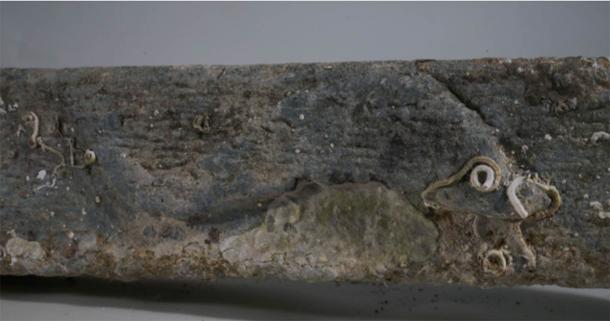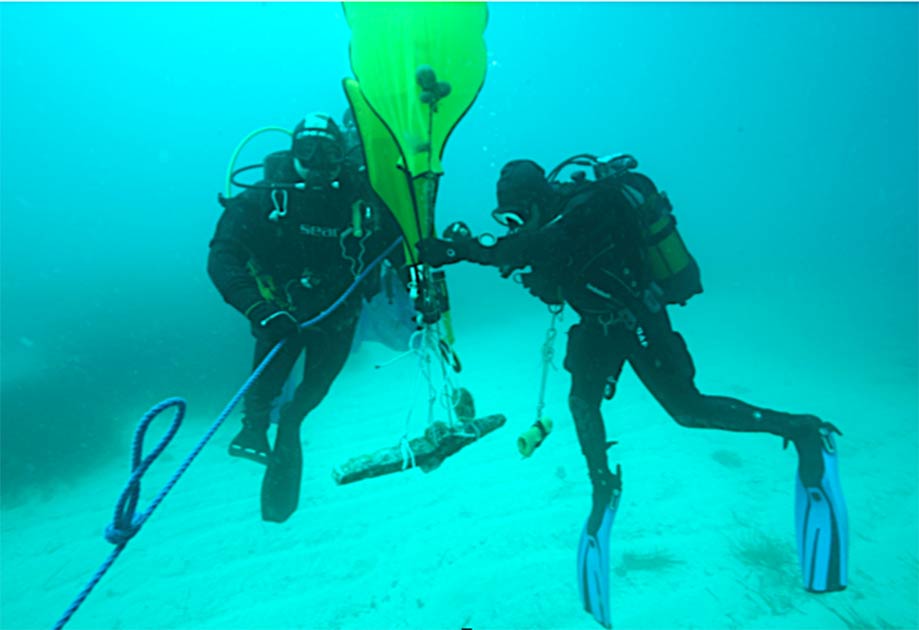2300-year-old Anchor Devoted to Goddess of Love Hauled Up
Marine archaeologists have made many important ancient discoveries in the Mediterranean and now an Italian team have uncovered an anchor at the bottom of the sea. It is 2,300 years old and it is inscribed with a dedication to Aphrodite, the ancient Greek goddess of love. This find is allowing experts to understand the mindset of ancient mariners and a little-known aspect of one of the classical world’s most popular deities.
The inscribed weight was found off the coast of Sicily. It was identified by a Sicilian diving center’s manager, Marcello Basile, lying some 60 feet (18.3 m) deep on the seabed. It was located in an area of the Mediterranean that has yielded many important historical artifacts. Basile alerted a local heritage and environmental organization the Soprintendenza del Mare, and a team of divers returned to the site, retrieving the weight from the seafloor.
Goddess of Love
One of the anchor’s arms was inscribed with a dolphin and this is an apotropaic symbol. It represents Aphrodite, who was the Greek goddess of love, passion, beauty and fertility. Her cult was derived from the Phoenicians and she was a very popular deity, especially with women. It is almost certain that the weight came from a Greek vessel.

The 2300-year-old anchor dedicated to Aphrodite, the Greek goddess of love, found by divers off the coast of Sicily. (Soprintendenza del Mare)
The dolphin indicates that the anchor was dedicated to this god, who was also seen as the guardian of mariners. Among the other emblems of Aphrodite were the swan and rose.
Protection of Goddess
The dolphin was inscribed on the weight to honor her and to secure the goddess’ protection. Roberto La Rocca and Francesca Oloveri, who took part in the dive are quoted by The Daily Mail as saying that “the dolphin was there to invoke the powers of Aphrodite to guide the sailors through tumultuous waters and shipwrecks.” Sailors in the ancient world were at risk from storms and pirates and their occupation was a very hazardous one, and many never returned from their voyages.

Experts say the presence of the dolphin (pictured) is likely to honor Aphrodite, who was the goddess of love and the protector of seafarers in Greek mythology. (Soprintendenza del Mare)
The Daily Mail reports that “anchors with apotropaic symbols were the smallest and last on-board ships.” They were used during storms or emergencies and were often a “last-ditch hope of salvation courtesy of the divine,” according to The Daily Mail.
- Aphrodite: The True Origins of the Greek Goddess of Love, Sex, and Beauty
- More than a Goddess of Love: The Many Other Aspects of Aphrodite
- From Incest to Incense: The Sad and Sordid Affair of Myrrha’s Punishment by Aphrodite
Bloody Hellenistic Age
The experts have tentatively dated the weight to the 4 th or 3 rd century BC. This is a period known to historians as the Hellenistic era. It was a time when the successors of Alexander the Great competed for control of the lands he conquered, and the era witnessed many wars. During the Hellenistic period, there were many rich and culturally sophisticated Greek cities, in Sicily, such as Syracuse, despite nearly constant wars with Carthage.
Nello Musumeci, the President of the Soprintendenza del Mare, is quoted by The Science Times as saying that “once again in our deep sea, important discoveries from bygone eras have been made.” The find is an important one because it demonstrates that Sicily had strong ties with the ancient world. Musumeci stated that “since ancient times, cities on the Mediterranean coast have been sharing their life, history and trade with Sicily,” reports The Science Times.
The anchor has been taken to Palermo where it will be analyzed. Sicilians are very proud of their maritime past, and artifacts like the anchor are still important to them. Madeleine ‘Elle’ Ota, a marine archaeologist stated that “it is important for archaeologists to understand how people today construct their identities with the ancient artifacts,” according to The Science Times. In turn, this can show the importance of modern people cooperating with archaeologists as they try and discover their history and heritage.
Top image: Divers recovering the 2,300-year-old anchor devoted to Aphrodite, the Greek goddess of love, off the coast of Sicily. Source: Soprintendenza del Mare
By Ed Whelan



















